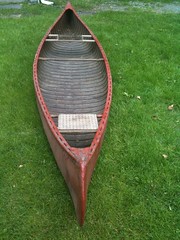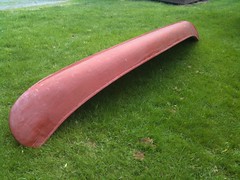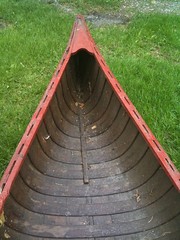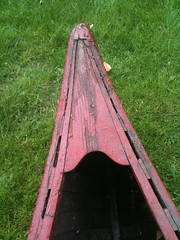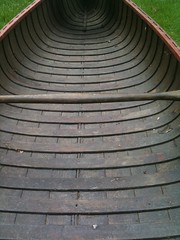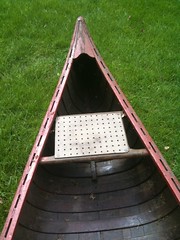djhouck
"Got Water"
I pulled this canoe out of my grandfather’s garage and am going to restore it. I was wondering how to identify the make, model & year of this canoe; can you define it by looking at it? It does have diamond shaped heads on the carriage bolts, which from my research may make it an Old Town? Where would I look to find the serial #? I do not know much about these wood & canvas canoes, this seems in good shape to me, how would you experts out there grade the condition of this canoe? It appears that it has had fiberglass applied at some point in its life, I want to restore it with canvas & filler. I want to replace the inner & outer rails along with the decks. I didn’t see any cracked or broken ribs, although some of the ribs are cracked at the tips (what to do about that?). The planking looks good from the inside; I suppose I will find more on that along with the stems when I uncover it. Speaking of uncovering it, how do I peel away the layers of fiberglass? Where should I begin my restoration efforts? Any help will be much appreciated.
